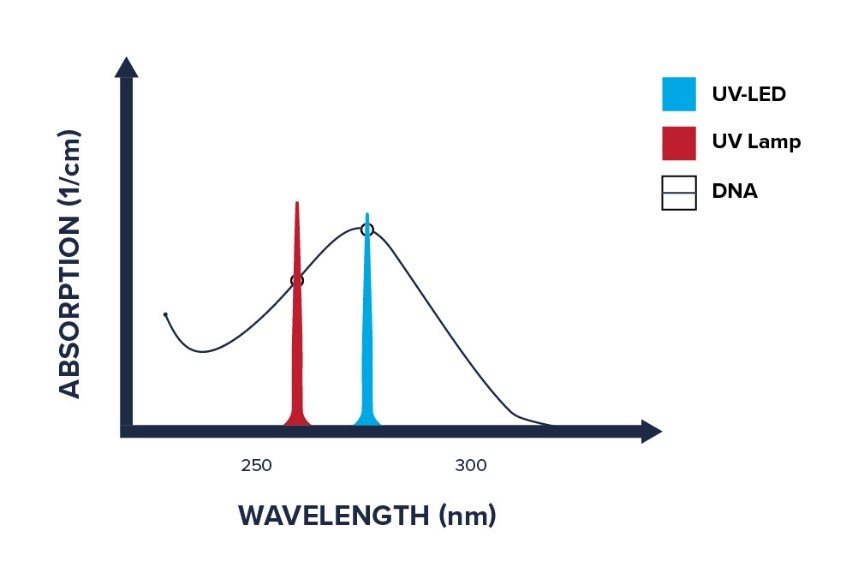Acuva, the Canada based UVC LED water disinfection solution provider, shared professional understanding about how much UV radiation is required to deactivate the novel coronavirus and how UVC LED technology may support the disinfection process.
Dr. Babak Adeli, Director of R&D at Acuva Technologies, explained the ways of novel coronavirus (COVID-19 virus/SARS-CoV-2) transmission and its reaction to UV radiation, showing the possible approach of using UVC LED to diminish the virus.
Adeli addressed that the novel coronavirus, is a new strain of CoV family that has not been previously identified in humans. Thus far, the novel coronavirus is being transmitted through touching contaminated surfaces, or via person to person. According to a recent study published in the New England Journal of Medicine, COVID-19 virus can live in the air and on surfaces between several hours and several days. In addition, Adeli highlighted that currently there is no evidence that the virus can survive in drinking water or sewage.
As a recent scientific accomplishment, UVC LEDs, with emitting wavelength spectrum from 265nm to 285nm, are considered as a revolutionary technology and the future of lighting and optics. UVC LEDs operate at low energy DC voltage, enable the design of compact and ultra-low maintenance disinfection devices, and generate UV radiation at sharp emission spectra and tailored peak wavelengths that target maximum absorption of microorganism DNA, as illustrated in Figure 1.

(Image: Acuva)
There are several databases that summarized the UV rate constant for bacteria, viruses, fungi, and protozoa. The Ultraviolet Germicidal Irradiation Handbook listed such data for over 600 microorganisms studied under various radiation sources in several mediums (air, water, and surface). In addition, the CoV family has been studied extensively and their response to UV-C radiation is established. In the absence of accurate UV inactivation kinetics for COVID-19 virus, the previously established data could be utilized to estimate the required UV dose to inactivate the novel strain of coronavirus.
Based on the available data in the open literature, it is suggested that the COVID-19 virus can likely be categorized with SARS-CoV-1 under mildly resistant viruses to UV radiation, similar to the Influenza virus, Hepatitis virus, and MS2. It would then require a UV dose greater than 40 mJcm-2. According to Adeli, achieving such UV dose should be possible on the surface by extending the exposure time. It should be noted that the required UV dose to inactivate microorganisms is a strong function of surface finish and humidity level. For example, the UV dosage to disinfect medical mask for re-use, including N95, is proposed to be significantly greater in several studied published recently.
Meanwhile, Acuva also addressed its expertise in point-of-use water disinfection with UVC LED and noted that the technology is critical to eliminate the microbial contaminants that can be introduced to water during transportation and storage.
Disclaimer: The insight offered in this article is based on data in open literature, no experiments specific to SARS-CoV-2 virus were conducted.
(Author: Babak Adeli, PhD/Director of R&D, Acuva Technology; Edited by LEDinside)





 CN
TW
EN
CN
TW
EN






